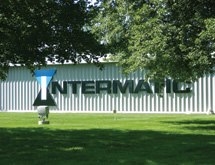The Wall Street Journal and Bloomberg are reporting some interesting data this morning and as such we naturally are wondering how many of you are using such data to help refine your demand forecasting. If used correctly, these type of data inputs can serve as leading indicators of what is happening in a particular market and the potential impact on your specific value chain and therefore your bottom line i.e. EBITDA or cash flow.
Bloomberg is out with a couple of measures of inflation or in the current case disinflation. Producer price index is down .7%, the consumer price index is down 1.4%, and a basket indicator called the JP Morgan Chase Global Inflation index (which includes the prior measures) is down 1.5%.
Separately, the Wall Street Journal is reporting that fuel prices dropped 2.5% from March 2013, and that that the cost of finished consumer goods fell 0.8%. And lastly, at least for this discussion, the housing market index came in at 44, which is 3 points higher than April 2013.
So, what does all this mean? I don’t really know and quite honestly it doesn’t really matter what I think. Sure there are all the high level discussions about disinflation (as opposed to deflation) potentially restricting profit growth. However, it also works to keep the cost of money down, and with costs decreasing, consumers potentially have more money in their pocket to spend on consumable goods. This of course assumes that the extra cash is not ‘consumed’ in other ways such as higher taxes.
But while all of this is interesting in a Great Gatsby cocktail sort of way, the real issue is what does it mean specifically to you, your business, and your value chain (supply chain plus customers and vendors, etc.)?
And depending on your company and your industry, the answer will be different. If you are in the general consumer product industry, then one interpretation is that the combination of decreasing costs means more cash to consumers and therefore that retail sales will rise, which might imply that you should be planning to increase production, and invest in increased inventories in order to meet increased demand, right? Or perhaps more strategically, given your upmarket branding strategy – would a price increase make more sense and allow the competition to make the risk and costly investments in inventory and capacity?
The associated conversation is that assume demand does increase? Will that demand show up in 2 months? 3 months? Can you do something about it? If your lead time is 3 months because you source from international suppliers (okay – might as well say China) then a one month lag in a causal factor might not help much. On the other hand, if you have a rolling 13-month trend you are watching, this type of information becomes very applicable no matter what the lead time.
More specifically, say you are in the housing industry. What is the impact of the market index climbing to 44? More demand for say flooring product because more houses are being built and sold? How long does it take for an increase of 3 points to impact demand?
The point here is that it is important that competitive companies have the ability to use this information; obtain it, track it, understand its impact on demand forecasting (short and long term) and to be able to do so without huge investments in man time to do the setup work.
Your planning and S&OP teams should have the data ready to go without need for setup and manipulation. Instead they should engage in the type of value-added actions such as the question and answers highlighted above, conducting what-if scenarios and really making intelligent decisions that best position your company for success in terms of measurable criteria, i.e. market share, cash flow and EBITDA. I am extremely sure they will find that type of work much more rewarding: who doesn’t want to be part of a team that can measure their contribution to success?
And as the great comedian Billy Connolly likes to point out – pay attention because it is all going to change tomorrow.


